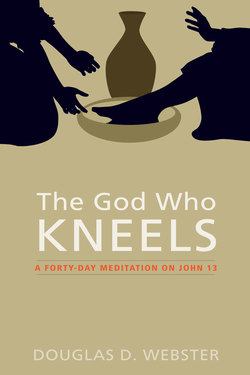Читать книгу The God Who Kneels - Douglas D. Webster - Страница 5
На сайте Литреса книга снята с продажи.
Preface
ОглавлениеLearning to Play John 13
The beauty of the Gospel narrative, including our focus on John 13, can be likened to a well-made instrument. In the hands of a skilled violinist, a lightweight, fragile piece of finely crafted spruce and maple can fill a concert hall with music. What the violin is to music, the Bible is to meaning. In the hands of a novice, the same violin only squeaks and grates, like fingernails on a chalkboard. No one just picks up a violin and plays beautiful music. It takes years of study and practice. The biblical text and the musical instrument require sensitivity and skill to draw out their true dynamic. I’m not suggesting that we need to be “Bible experts,” but we have to “play” John 13 as John meant it to be played. The depth of John 13 is drawn from the truth revealed, and not from ourselves.
Like a violin, the verses of John 13 may appear to be simple and lightweight, but when played with skill, the narrative resonates with truths so profound and moving that we are filled with awe. The biblical text in the hands of a sensitive and skilled interpreter reveals the dynamic meaning that the Spirit-led author intended. Faithful readers and good preachers draw out the meaning of the text the way a great violinist plays music. We want the full range of meaning to be played out not only in our hearing, but in our living. The words and actions of Jesus in the upper room are essential for spiritual formation and ethical impact. Less than twenty-four hours before the crucifixion Jesus gave his disciples a full description of the truth of the atonement and the way of discipleship.
To be attentive to the upper room experience we need a close reading of the text—a lectio divina (divine reading). Online surfing and scanning is changing the way we think and affects our meditation on the Word. Our habit of processing data at a rapid clip tends to whisk us past the truth that is meant to fill our minds and hearts and stop us in our tracks. John’s narrative art plays to our praying imagination and invites us to become like one of the original disciples. That is to say, that the message intended for them is intended for today’s disciple. The same Holy Spirit who reminded the disciples of everything Jesus said continues to remind us (John 14:26). We join the twelve in the upper room. The text is the Spirit’s gift to the church. John’s vocabulary is simple, his language straightforward, but the impact of the upper room’s words and events is incalculable.
These meditations are not spiritual Pop-Tarts with a thin layer of fruity goodness. Comedian Brian Regan has a hilarious take on people who microwave their Pop-Tarts for three seconds because they don’t have time in the morning to toast them. Regan warns, “If you are waking and hauling in three seconds, you’re booking yourself too tight.” The longest meditation here takes about ten minutes to read. If you prayerfully read through the verses in John 13, it will take you a little longer. These theological devotionals are not spiritual sound bites. They require thought and prayer. I don’t have a particular reader or “target audience” in mind. I’m writing it up as I see it.
I don’t have a communication strategy. That frees me up to say what occurs to me to say, what I’m led to say in the light of the biblical text. I hope that works for you.
